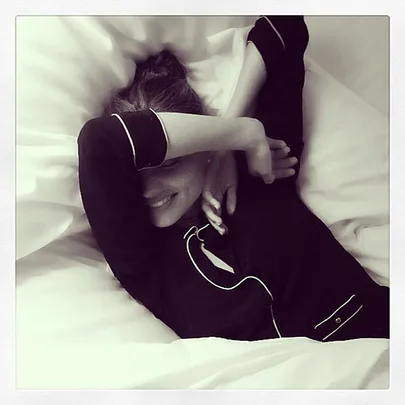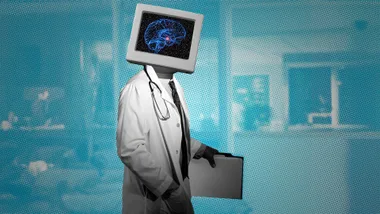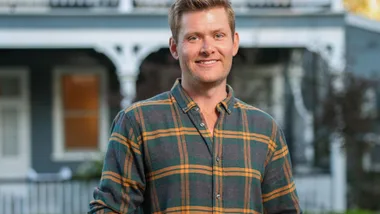Tracey Miller thought feeling tired just came with the territory of a busy life of full time work and raising three kids. But a series of events uncovered a deeper issue.
The first time I started to wonder if something was wrong was when I veered off the highway and crashed the car into a side barrier. The noise of metal scraping on metal woke me from my micro sleep and I swerved back into the right lane with my heart pounding.
I anxiously glanced in the rearview mirror and was very relieved to see my three offspring strapped happily in their baby seats unaware of the near miss. My hour-long drive home was often a battle against fatigue.
When I found my senses fading, I would fuel up on sugar at the many roadside petrol stations to try to keep alert. But I figured that’s just how it is: I had three young kids under six. I was working full-time. All of my friends complained about being tired, and I assumed this was my new normal.
But other things started happening.
Apart from falling asleep at the wheel (not recommended by the way), I began to fall asleep whenever I was sitting still. On public transport; as a passenger in a car; watching television; in dull meetings at work.
I can’t tell you how many times I would jolt awake while sitting at my desk at work and wonder how long I’d had my eyes closed, and if any of my colleagues had noticed. (They had – they tell me now!)
Similarly, whenever I laughed (which was often) I found I started to buckle at the knees. Not in a big, fall-to-the-floor-like-I’ve-just-fainted way, but just enough for me to start thinking, “What the hell was that?”
I also started having terrifying dreams.
They were always identical. I would feel a presence near me and then feel it pressing on me, holding me down. I would try to alert my husband, only I wouldn’t be able to move, nor speak. I would be silently screaming, “Get it off me”, and trying to push it away with my hands, but I couldn’t move.
After a few minutes the feeling would pass and I would hound my husband for not coming to my aid.
He’d say I had my eyes closed and never made a sound, even though I could see him the whole time and I was adamant I was screaming.
Now I was getting worried.
I figured that at best I had a brain tumour, at worst I was possessed by a demon. Like anyone in my situation, I started peppering Google with phrases like “scary dreams” and “hallucinations not involving recreational drugs”.
Surprisingly, it came back with an answer.
My nightmares had a name: “Old Hag Syndrome”.
The old hag referred to the “spirit” that felt like it was sitting on me, and was a common dream experienced by people with sleeping disorders. Sleeping disorders? WTF? I thought they were the domain of overweight men who smoked non-stop and ate copious amounts of takeaway as they drove their trucks across Australia.
But before you could say, “Good night, sleep tight”, I had booked in for an overnight study at a sleep clinic.
The Woolcock Clinic is an Art Deco building in the Sydney inner-city suburb of Glebe, housing the largest sleep unit in Australia, where every night sleepy folk turn up from all over NSW looking for answers to why they are so damn tired.
I’m shown to my room (very roadside motel-esque) and told to change into my pyjamas, before the technician arrives to wire me up. This is no easy feat. It takes 45 minutes. There are five wires attached to my head, one behind each ear, one near each eye, one on my forehead and one on my chin. There are also bands across my chest and abdomen, two wires running down each leg, a very annoying tube in my nose and a thermometer clasped on my finger.
The wires record breathing, brain waves, oxygen levels in blood, eye and leg movements, and heart rate. All the electrodes are attached to a box which hangs heavily from a lanyard around my neck, like an accessory for a tired rapper. The technician breezily mentions I am free to walk around and venture to the common room to watch TV. As if. I look like a lab monkey about to be launched into outer space. I decide to stay in and before you know it, it’s lights out at 10pm.
With so many wires attached to my body it is difficult to have a “normal sleep”.
Every time I turn over I find myself in a tangle. A couple of times the electrodes become unplugged and the technician comes and plugs me back in. By the time the technician returns to wake me at 6am, I am not feeling especially rested.
The good doctors at the clinic suggest that I return for a Multiple Sleep Latency Test, which is essentially a daytime nap study, where every two hours I go to sleep for 30 minutes before being woken up.
Bingo! By halfway through the day the doctor arrives to confirm what he has suspected all along. I have narcolepsy.
Yep! The one where people fall asleep all the time.
It is a neurological disorder characterised by overwhelming daytime drowsiness and uncontrollable urges to sleep. It affects around one in 2000 Australians, equally divided between men and women*.
Common symptoms include falling asleep throughout the day with little warning (explains those car trips). Dreaming during naps and experiencing dream-like hallucinations (the Old Hag!) are also classic signs, as is the inability to move when asleep (called sleep paralysis).
A loss of muscle control when experiencing big emotions (such as laughter or anger), also known as cataplexy, is another symptom. It is thought narcolepsy is related to a lack of a brain chemical called hypocretin, but it’s under-researched so no-one really knows.
There’s no cure, but the symptoms can be alleviated by medication, which is the route I took. The doctor couldn’t believe I had been functioning for such a long time without a diagnosis, which has been life-changing.
I’m still prone to sleeping bouts that are impossible to ignore, but the daily mental and physical exhaustion from battling to stay awake has definitely improved. And thankfully, I haven’t heard a thing from that Old Hag.
*SLEEP HEALTH FOUNDATION. YOU SHOULD ALWAYS CONSULT WITH YOUR GP BEFORE STARTING ANY SUPPLEMENT REGIMEN
 Instagram/Miranda Kerr
Instagram/Miranda Kerr









